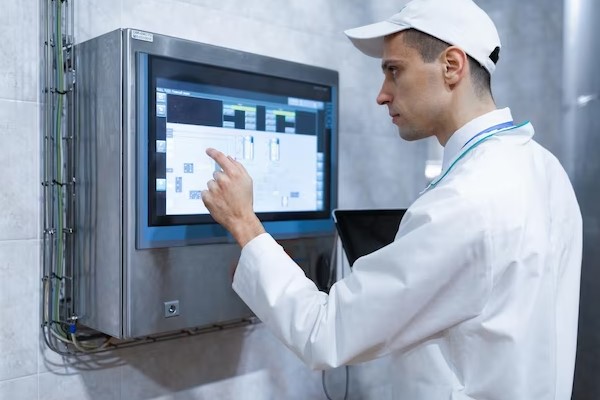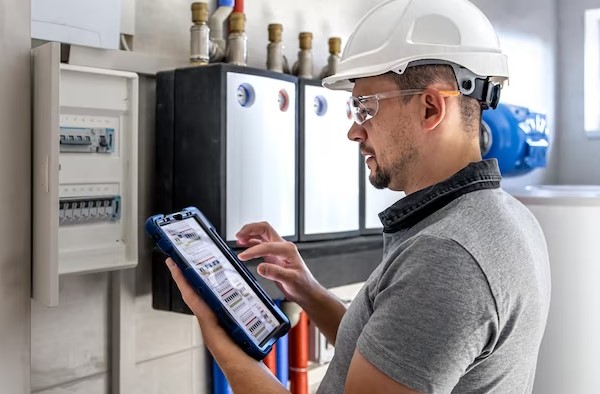Gas analysis plays a vital role in achieving production goals for many industries. This is because it helps to ensure that the production process meets safety and environmental standards.
For example, semiconductor fabs and optical component manufacturing require gas analysis to detect impurities in gases used for production. Fuji Electric’s cross-stack laser gas analyzers meet these requirements with high accuracy and resolution.
Accuracy
Accuracy and precision are two key aspects of quality control that are often referred to in the context of industrial gas analyzers. The International Organization for Standardization (ISO) defines accuracy as the “proximity of a set of measurements to their true value” and precision as the “repeatability or reproducibility of the measurement.”
In industrial applications, a gas analyzer can play a crucial role in quality control by providing timely and accurate data on various variables related to a system’s operation. This includes assessing a system’s efficiency, determining carbon monoxide levels, and monitoring exhaust leaks.
The accuracy of a gas analyzer is directly related to its performance and the calibration process used to ensure it’s working properly. In most cases, a gas analyzer should be tested regularly to verify that it is still functioning correctly and producing accurate results.
This test can involve comparing the analyzer’s readings to a known reference gas with a specified CO2 concentration. This can be done by sending the device to a certified gas lab or performing a manual calibration process on it.
Most gas analyzers are typically calibrated using a mixture of gases provided by a gas blender with a measured gas concentration level on a certification tag. The analyzer is then adjusted to read this gas mix accurately and report the same values on the certification tag as it does when using an unknown gas mix.
The difference between the readings of the gas analyzer and the gas mixture on the certification tag is called a “Tag Value.” It is generally between – 2% and + 2% relative to the actual value. This is a very small amount of error and is considered very trivial by most people.
However, this is not always the case, and the analyzer may need to be tested again if the initial results are unacceptable. Depending on the application, this could involve a repeat calibration on the gas analyzer and/or the gas blend.
Picarro’s CRDS analyzers are designed to meet the highest requirements for trace gas measurements and require minimal maintenance, making them a great choice for a wide range of applications. They have a number of unique features that enable them to achieve unmatched stability, and their patented wavelength monitor tracks one or more well-defined spectral reference lines to guarantee low drift.
Availability
There are many types of gas analyzers on the market today. However, some key factors must be considered when selecting a gas analyzer for your facility. These include accuracy, efficiency, and durability.
The most accurate and reliable industrial gas analyzers use laser spectroscopy, zirconia oxygen analysis, or a combination of the two. Other advanced technologies used to determine the concentration of gas are infrared spectroscopy, stack gas monitoring, process gas chromatography, continuous emissions monitoring systems (CEMS), and hydrogen purity analysis.
Choosing the right gas analyzer for your facility is an important decision that requires input from an expert in the field. Yokogawa is a world-class gas chromatograph manufacturer with years of experience in helping customers select the best solution for their application.
In addition to laser spectroscopy, Yokogawa offers a range of sophisticated and cost-effective gas analyzers that deliver the performance you need. From tunable diode laser spectroscopy to zirconia oxygen analysis, Yokogawa is the gas analyzer specialist for your next project.
For example, the Mercury 903, a portable TOC analyzer, is a great choice for small to medium-scale operations. It includes a touchscreen color display, a high-volume vacuum sampling fan, and a total flow rate monitor. It also features an FID detector and pressure regulator controlled by software. The device can be moved from point of use to the test bench or deployed on a mobile cart. It’s a good way to improve productivity while reducing downtime and operating costs. The device is also a good way to identify the contaminants that are most likely to cause problems in your facility.
Efficiency
Whether it is for monitoring emissions, ensuring product purity, or improving process control, industrial gas analyzers are an important part of many quality assurance applications. These analyzers provide accurate, real-time measurements of a variety of gases and can help optimize operations in a wide range of industries.
In addition to reducing costs, industrial gas analyzers can reduce the waste produced in production facilities. These devices can be used to monitor the emissions of harmful components such as nitrogen dioxide and nitric oxide, which are typically present in flue gas streams from industrial combustion equipment such as boilers or furnaces.
They are also useful for detecting and analyzing the oxidation of nitrogen compounds in the air, such as methane. They are especially useful for monitoring airborne nitrogen and carbon monoxide, which can be found in indoor and outdoor areas and can cause significant damage to respiratory systems.
The accuracy of the analyzer is critical for preventing contamination and maximizing production efficiency. In addition, the device can be set up to provide real-time data analysis, which can be beneficial for optimizing your operation and minimizing waste.

High-purity gas analyzers are essential for a variety of different processes, from testing the chemical composition of drugs to monitoring purity levels for active ingredients. They are designed to meet the demanding requirements of these applications, delivering reliable results with minimal maintenance.
They also offer a wide range of capabilities, including trace gas monitoring and nitric oxide (NOx) measurement. Using a variety of different techniques, NOx analyzers can detect and measure NOx concentrations from a range of ppm to several hundred parts per million (ppm).
Among the most commonly used methods are non-dispersive infrared radiation spectroscopy (NDIR), chemiluminescence detection, and direct absorption of gas molecules. These analyzers can accurately measure and detect gas components in low concentrations, which helps improve process control and optimize manufacturing.
They are also useful for determining the oxygen content of packaging, a critical step in assessing the shelf life of packaged products. Moreover, these analyzers are highly portable and can be used for a wide range of applications.
Safety
The safety of industrial gas analyzers is of utmost importance for process control and quality assurance. They are used in a variety of industries to ensure that the products being shipped out are free from contaminants and other issues that could damage them.
For example, in the semiconductor industry, defects can lead to increased costs and decreased profits. A properly functioning industrial gas analyzer can help reduce these costs and improve the customer experience.
Another area where the safety of industrial gas analyzers is of high importance is in the petrochemical industry. Using an industrial gas analyzer can help to ensure that the petrochemical products being shipped out are of high purity and are free from any contaminants that may harm the product.
Additionally, these industrial gas analyzers can also be used to monitor environmental emissions and maintain compliance with local regulations. They can be used to determine the amount of carbon monoxide, carbon dioxide, HC infrared, and fuel-dependent total hydrocarbons in a system and ensure that emissions comply with local standards.
Depending on the gas being measured, different types of analyzers are available. Some are designed for specific applications, while others are general-purpose devices that are used across multiple industries.
Some major industrial gases monitored include carbon monoxide, carbon dioxide, nitrogen oxides, oxygen, and hydrogen sulfide. These analyzers can be used to assess the efficiency of a system and detect any leaks or other issues.
Other industrial gases that are monitored by industrial gas analyzers include hydrofluoric acid, acetone, and benzene. These gases can cause serious health hazards to workers and the environment. Having an industrial gas analyzer installed can help to prevent these hazards and promote the safety of employees in a manufacturing facility.
The use of industrial gas analyzers in quality control is growing rapidly across industries. This trend is due to the increasing focus on environmental safety regulations and the adoption of advanced technologies in industries.
The industrial gas analyzer market is expected to grow significantly in the coming years. The increase in demand for analyzers from various sectors such as oil and gas, chemical, and petrochemical primarily drives this growth. This growth is expected to be especially significant in the Asia-Pacific region and Europe.




